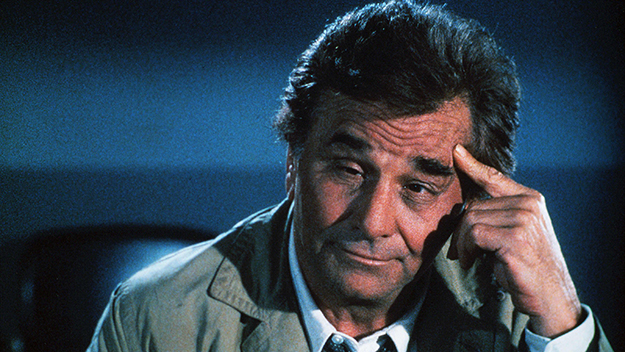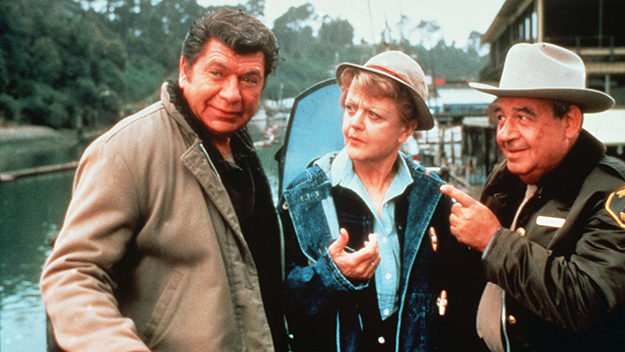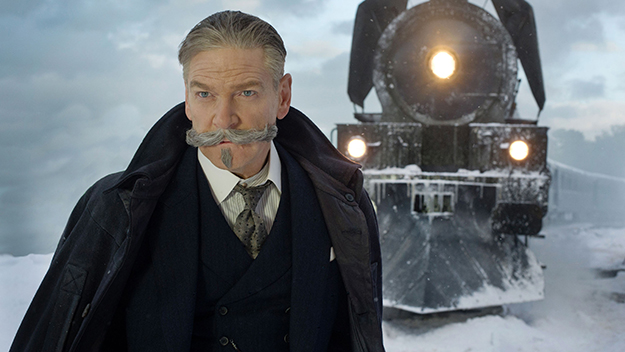Classified: Whodunits
Classified is a regular column on genre by April Wolfe.

Peter Falk in Columbo
There’s an open secret among film aficionados old enough to remember studio output before Kevin Feige but young enough to cosplay Captain America on occasion: Columbo and Murder, She Wrote are good, actually. Considering these shows dominated their time slots for years, it shouldn’t be such a controversial thing to attest to their quality, but they’re also both of a genre that’s earned a bit of disrespect over the years, that of the whodunit.
A potential issue for the whodunit is its inherently “cheesy” theatrics, a formula that forces the film to follow the convention of succinctly introducing every possible suspect with their likely motive along with their quirky personality, which tends to make most characters into archetypes identifiable by, for instance, a particular tic. Take John Guillerman’s 1978 adaptation of Agatha Christie’s Death on the Nile, wherein Angela Lansbury’s Salome Otterbourne rarely enters a scene without a tipple of alcohol in a gilded little chalice. Her character is entirely encompassed within this one act—she is a drunk but elegantly so and believes her privilege affords her the right. Now maybe Guillerman could have lingered on Salome longer to render her three dimensional, but that’s not entirely necessary and potentially a detraction in a whodunit, which relies on characters to be angels, foils, or foes. It’s the simplest form of storytelling there is, if only because there are a lot of characters to get to in an ensemble with a messy, often convoluted story; efficiency is key. And to squeeze as much as possible out of every character’s five minutes of screen time, a director must go to a professional of that sort of thing: a character actor.
That Lansbury appeared in Death on the Nile and then as Miss Marple in The Mirror Crack’d, another Christie concoction, before embarking on a hugely successful run as a different kind of TV sleuth is not a coincidence. Lansbury has been a character actress since she was a teenager, teetering back and forth between villain and virgin. Peter Falk of Columbo, too, was a perennial character actor and also appeared in Robert Moore’s comic whodunit Murder By Death alongside Eileen Brennan (who then appeared in Jonathan Lynn’s Clue) and David Niven (who had appeared with Lansbury in Death on the Nile). To look at the very best of the whodunits and their casts is to see a hodge-podge collection of the biggest personalities of screen and television shuffling from project to project, inhabiting whichever larger-than-life role they are given. Half the fun of a whodunit is looking up every actor’s IMDb and seeing how they fit into the larger scheme of the genre; it’s impossible for me to get through a single episode of Columbo or Murder, She Wrote without pausing to say, “Oh, that guy!” Perhaps moviegoers in recent years may have veered away from a whodunit, because it revels in its big characters, but maybe more so because it delights in its subsequent clichés.

Claude Akins, Angela Lansbury, and Tom Bosley in Murder, She Wrote
A whodunit need not take itself seriously, which is why some of the best have either been straight comedies like Clue, Murder By Death, or Sidney Lumet’s Deathtrap, or dramas with comic overtones like Herbert Ross’s almost giallo-esque The Last of Sheila (Murder, She Wrote borrowed a great deal from giallo, too) or the perpetually confusing Howard Hawks film The Big Sleep. (The latter presented a new subgenre of films, eschewing the whodunit’s need for closure.) And then, of course, there are the twisted horror films of the genre, like Wes Craven’s Scream and James Mangold’s Identity, which is far more fun than its Rotten Tomatoes rating would lead you to believe. That film stars Ray Liotta, John Hawkes, Clea DuVall, John C. McGinley, Jake Busey, Holmes Osborne, and Alfred Molina, offering the cream of the crop of character actor personalities thrust into a remote hotel for the night. Unfortunately, reviewers didn’t catch the film’s comic undertones and placed it in a Usual Suspects box, claiming it was a tiresome rip-off. It was 2003, after all, a post-9/11 world, in which all films, including comic book adaptations, went to the gritty, grim, and dark sides, and Mangold was attempting to inject a 1990s Tales from the Crypt vibe into cinema when people wanted to be serious and think seriously. It just wasn’t the right time. But is it possible we are ready to have fun again? Are there enough character actors to go around?
Kenneth Branagh’s revival of Christie’s Hercule Poirot with Murder on the Orient Express became a bellwether for the whodunit’s survival into the future, and, according to the box office, it seems fun is back on the menu, even if critics didn’t exactly shine to the sweeping comedy. (He’s returning with an adaptation of Death on the Nile next.) The generally stuffy responses I noted on the release of the film decried its lack of subtlety and its eye-rolling theatrics, to which I must respond: Have you read Agatha Christie novels? All of them are layer upon layer of candy pulp. If anything, I’d say my biggest criticism of Branagh’s adaptation is that it was too tame—that there weren’t enough character actors. Branagh’s turn as Poirot himself luckily included a double-mustache and opened with promise, but it is unfortunate that only a few of the actors, including Willem Dafoe, understood what sort of movie they were in, one that had no time for subtlety. It could and should have been bigger.

Kenneth Branagh in Murder on the Orient Express (Kenneth Branagh, 2017)
It’s not surprising that whodunits flourished in television, where character actors still pop up with regularity, and where it’s okay to be a little cheesy. But around 9/11 (see the pattern here?), the American television whodunit morphed into the cold and sterile procedural, with more attention paid to DNA tests and advanced technology than to shifty criminals whose idiosyncratic tells tip off the detectives. Law & Order: SVU is a rare show that straddled the procedural and the “cozy,” with new guest criminals with big, warped psychologies every week. The cozy whodunit—in the vein of Columbo and Murder, She Wrote—still lives on in literature and in other parts of the world. Take the wildly popular Australian series Miss Fisher’s Murder Mysteries, which features heiress Phryne Fisher flapping it up with burlesque dancers in one episode and then posing as the fearless assistant to a circus knife thrower in the next. Yes, murders are happening, and Phryne’s dealing with her own demons, but it’s a show where all will be right in the end: a cozy.
Fortunately, it seems the whodunit is about to return to theaters in all its cozy glory, in the form of Rian Johnson’s Knives Out, which pairs character actors like Michael Shannon and E. Emmet Walsh alongside lead actors who seem to have been champing at the bit to be characters, like Toni Collette, Daniel Craig, and Chris Evans, all of them capable of “big” turns (Hereditary, Collette; Logan Lucky, Craig; Scott Pilgrim, Evans) but often pigeonholed into bland leads. Johnson, ever the student of genre, includes subtle and overt nods to the whodunits before him. But it’s up to you, gumshoes, to find them for yourself.
April Wolfe is formerly lead critic for LA Weekly. She currently hosts the Switchblade Sisters podcast, and has written for The Village Voice, AV Club, the Washington Post, and The Wrap.







